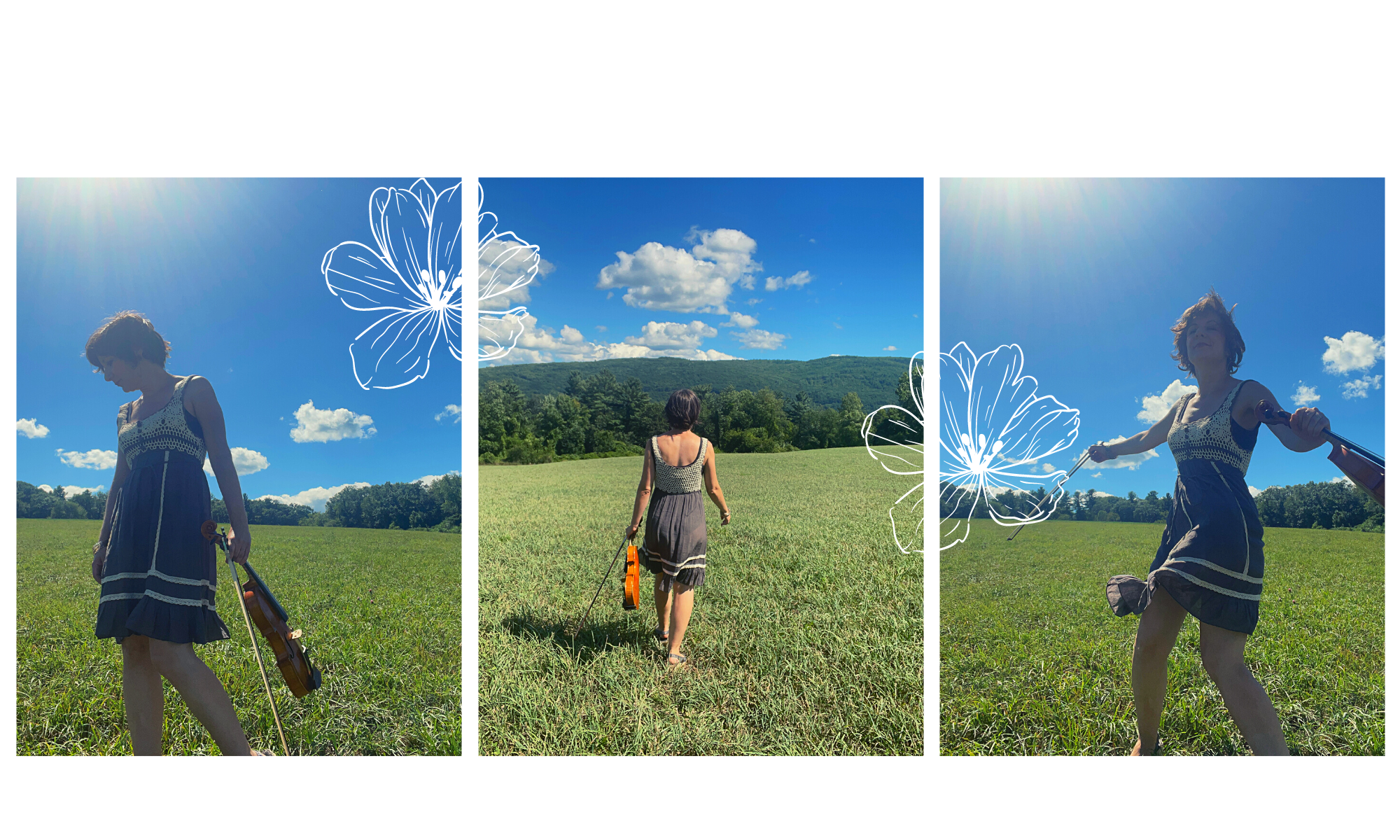BIO FAQs FREEBIES PRESS KIT LISSA’S BANDS ORIGINAL MUSIC
DEFINITION
For the complete definition of contra dance or contra dancing, please check out Wikipedia, the on line encyclopedia. After reading their excellent description of the dance form, come back and read below.
CONTRA DANCE MUSIC
Contra dancing is special because it is almost always done to live music. Like wise, traditional New England music is unique because it still has strong ties to a social dance form.
Before around 1970, contra dancing was found only in New England, and danced primarily to traditional New England style music. When the folk dancing revival started, and the seeds of contra dance were sown further afield, people realized that you could dance to many styles of music. Today the band at a contra dance might play: southern old time, French Canadian, or Klezmer music, and every combination in between! You can still play New England traditional tunes for a contra dance, but you might not do contra dances to New England music exclusively.
INSTRUMENTATION
Throughout the ages, New England bands have included a wide range of different instruments. In the early 1900’s bands included the popular sounds of the Dixieland and Swing era. It was not uncommon to have tenor banjo, trumpet, or saxophone, in addition to traditional dance band instruments like fiddle, piano, accordion and guitar. Mellie Dunham (a touring dance fiddler from Norway, ME) was known to have traveled and recorded with a cellist. Harmonica was another common instrument of the region (many men learned the harmonica in lumber camps, because it was cheap and easy to carry around).
Ralph Page notes, in the 1976 edition of ‘The Country Dance Book’ that “Lost, perhaps forever, are the wonderful full-band orchestrations for Plain Quadrilles such as ‘Prince of Good Fellows’, ‘The Black Cat’, ‘Circus’, ‘Autumn Leaves’, etc. Lost too, are the old-time Quadrille Bands consisting of first and second violins, cello, contra bass, viola, first and second cornets, first and second clarinets, trombone, and tuba, with sometimes a flute and a piano. Perhaps the current resurgence of interest in the older dance forms will eventually include an interest in the dance orchestras of former years”
WHAT TO CALL IT
It also might interest the reader to note that before the modern contra dance revival a night of dancing was not nessesarily known as a “Contra Dance”. People used terms like “Square Dance” “Barn Dance” “Kitchen Junket”, “Old Timers Ball”, or simply “The Dance” (since there might not have been a lot of different things to do in any given rural community, there was no need to differentiate). Dances were held at facilities like church halls, town halls, grange halls, barns, and even kitchens and living rooms. At one time in New England (and especially in the rural communities) these dances were one of the few social outlets. They were so popular that one band might be out playing as many as 6 nights a week!
CALLERS
There are a number of dance teachers (or “callers”) who have been extremely influential in carrying on and passing down the tradition. Learning more about these individuals (as well as today’s modern callers) will greatly inform your understanding of the dance form.
While today an evening of dancing is mostly “contra” dances, with a waltz before the intermission, and another waltz at the end. This was not always the case. Traditionally a band might start out by playing one or two contras, then a fox trot, a waltz, a schottishe, a square or circle mixer, and then another contra or two. There was more variety in dance forms, but less variety in the choreography of each individual dance. Modern callers are very prolific and are always choreographing new dances, and coming up with new figures within the same basic form.
We hope that dancers today will enjoy and revel in the modern contra dance, while appreciating its New England origins and roots.
HOW CONTRA DANCING WAS INVENTED
Started off as a cash crop.
Had to entertain them summer folk
on Saturday nights.
Renn TolmanGot Uncle Walter
show us the figures ‘n steps
to them old contrys and quadrilles
we called ’em square dances
Hollis and Quint played their flute and fiddle
They’d get Arno on his guitar
go down to that abandoned cider mill
had that brook running underneath it
smell of pomace and rotting wood
Sit there in the lantern light
pass a bottle around
play them old dance tunes
with that great echo
Uncle Walter’s nephew’d
sit in a dark corner
couldn’t see him quiet feller
Surprised everyone by
lilting out in his flute-fiddle voice
chanting the changes to Hull’s Victry
like he’d been doing it all his life
He was a natural
They pressed him into service
at the very next dance
You know how the story goes from here
How the hippies came to the dances
with their Patchouli Oil and bare feet
And how they didn’t like the word square
And how they discovered some were contras
and we heard one of them tell someone
It’s not square dancing it’s contra dancing
it’s not square dancing it’s contra dancing
And the rest is history except that there are
still some of us old folks up here
who like to say we’re going to the square dance
